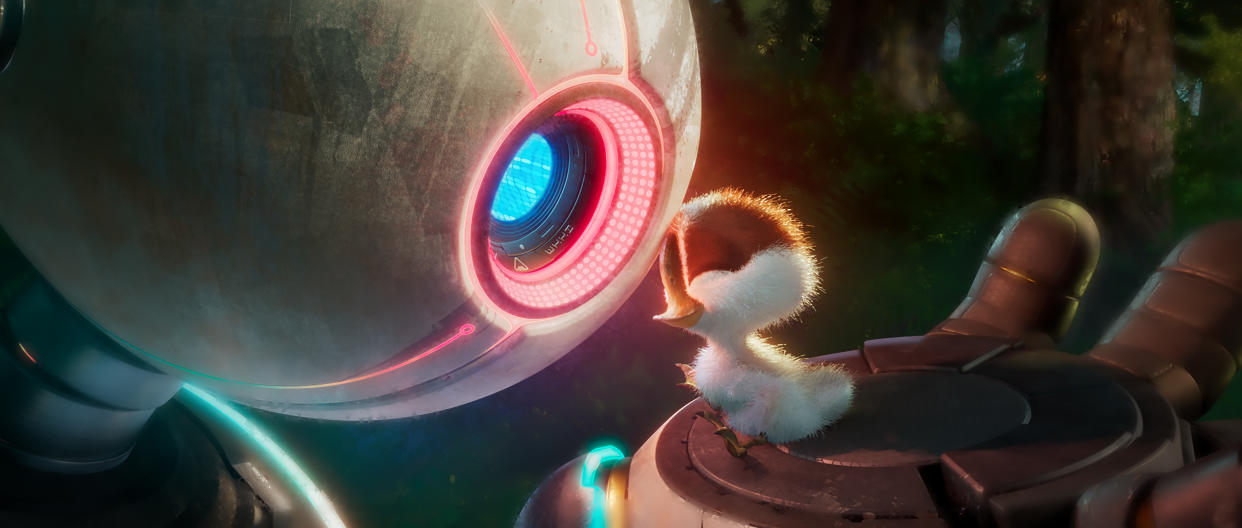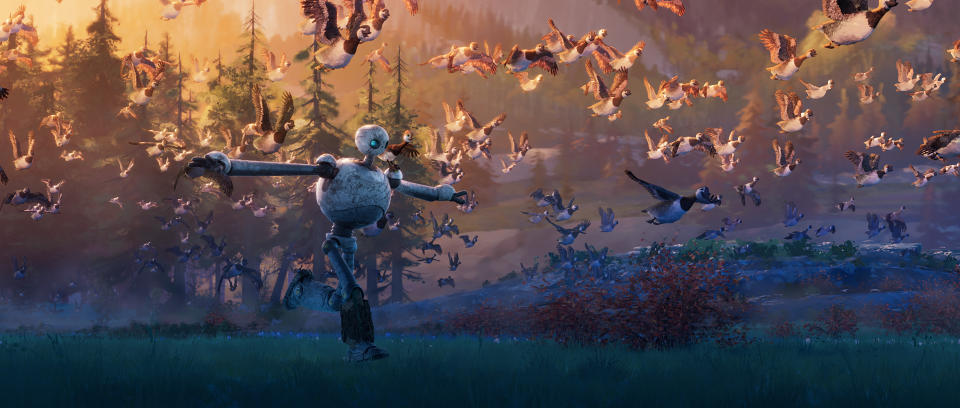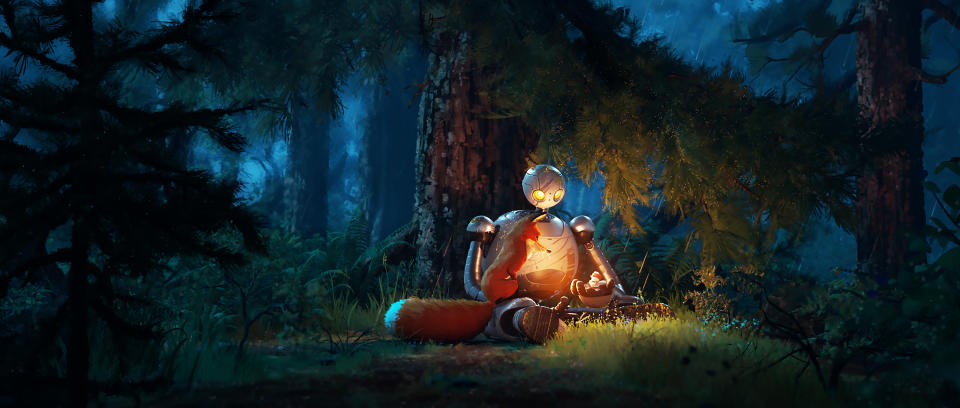‘The Wild Robot’ Trailer Sees DreamWorks Channel ‘Bambi’ and Miyazki for Hand-Drawn Aesthetic

Universal premiered the second trailer for “The Wild Robot” (DreamWorks, September 27) at the Annecy Animation Festival on June 11. Adapted from Peter Brown’s illustrated book and directed by Chris Sanders (“How to Train Your Dragon,” “Lilo & Stitch”), the sci-fi adventure concerns a robot called Roz (Lupita Nyong’o), washed ashore on an uninhabited island, who must adapt and live among the animals, especially after adopting an orphaned gosling bird.
Also contributing voice performances are Pedro Pascal as Fink the fox, Catherine O’Hara as Pinktail the opossum, Bill Nighy as Longneck the goose, Kit Connor as Brightbill the gosling, and Stephanie Hsu as Vontra the robot, as well as Matt Berry, Ving Rhames, and Mark Hamill.
More from IndieWire
Robert Pattinson and Parker Finn Remaking 'Possession,' the 1981 Isabelle Adjani Cult Horror Classic
Fully animated at DreamWorks, “The Wild Robot” explores the relationship between technology and nature. For this, DreamWorks embraced an impressionistic 2D aesthetic (inspired by Tyrus Wong’s legendary watercolor backgrounds in “Bambi” and Hayao Miyazaki’s lush forests), expanding on the tech the studio created for the illustrative-looking “Puss in Boots: The Last Wish” and “The Bad Guys.”
The team was led by production designer Raymond Zibach, head of story Heidi Jo Gilbert, head of character animation Jakob Hjort Jensen, VFX supervisor Jeff Budsberg, and head of look Baptiste Van Opstal.

“In this particular story, where a piece of high technology is lost in a wilderness, it became incredibly important that it resonate properly with Roz,” Sanders told IndieWire. “I’ve been thinking about this a great deal: Up to this point, we got all these wonderful gifts from CG, taking geometry and wrapping it up as effectively as we could to evoke reality. But we also lost contact with that analog handmade background that was so beautiful and resonant and really just emotional.
“We’re doing our very best to make it look organic,” he continued. “And we were in the right place at the right time. DreamWorks had made these wonderful advancements in creating illustrated worlds again. And I was asking Raymond and everyone to go as far as we possibly could, to a world that felt like those soft painted worlds that inspired us to get into animation in the very first place.”
Thanks to the new tech, DreamWorks was able to hand-paint all of the environments in 3D space with a talented group of matte painters while also applying 2D textures and shaders to Roz and the various animals. Thus, they were able to more directly translate the look of the concept art to the animation than was previously possible.
“It’s a stylus instead of a brush, but that stylus is held by a human hand and our skies, our trees, everything, has been painted,” Sanders said. “And what we really have now is this CG robot stepping into a hand-painted world, and one of the exciting things that we did throughout the story, which was something that was very important in the book, is that the more time that Roz spends in the wild, the more her surface is changed. She gets dents and scratches, and she gets mildew and mold and little things growing on her. She very quickly also becomes a hand-painted surface. And she belongs now to the wilderness with the animals.”

Roz’s minimalistic robotic design was intentional. Sanders’s main directive was that she not have a mouth (a departure from the single line representing her mouth in the book). Aside from movement, her animated emotions would be limited to the data entries that light up her eyes and the bursts of light that shine through the cracks and circles of her face and body.
“One of the gifts that we had were graphic illustrations by Peter Brown that were both very specific but also a bit vague because Peter’s silhouette of Roz is very defined,” added Sanders. “So we wanted to be very true and honor the silhouette that he had created. She’s got this sort of empathetic thing going on that we didn’t want to lose track of either. All the robots that I love from cinema have very little to no facial articulation [with the exception of ‘Iron Giant’].”
That said, Nyong’o did the heavy lifting with her voice in her animated debut. However, she was not digitally manipulated in any way by Randy Thom, the Oscar-winning director of sound design at Skywalker Sound. That’s because the big push today is to make an artificial voice indiscernible from a human voice.
“But it also meant that it put 100 percent of the performance on her,” said Sanders. “So especially in the first meetings we would have, but all the way through the process, Lupita and I would typically talk for upwards of an hour before she ever stepped up to the microphone to record anything. And we were just talking about who is Roz, how do we get this performance, and how do we get across the development that she’s going to go through?
“And Lupita was looking to humans always because [Roz is programmed to problem solve]. She understands the definition of things, but has no experience with them. And that’s what she’s going to gain as she goes ahead. And what she learns from this bizarre animal behavior is that they’re programmed to survive, and in that programming, there is no compromise. And one of the things Peter revealed to us early on was the idea that kindness can be a survival strategy.”
Best of IndieWire
'Song of the South': 14 Things to Know About Disney's Most Controversial Movie
The 55 Best LGBTQ Movies and TV Shows Streaming on Netflix Right Now
A History of Unsimulated Sex Scenes in 17 Cannes Films, from 'Mektoub' to 'Antichrist' to 'Caligula'
Sign up for Indiewire's Newsletter. For the latest news, follow us on Facebook, Twitter, and Instagram.

